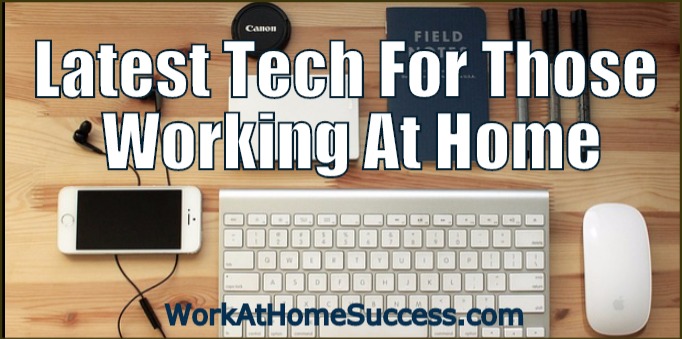The Latest Tech for Those Working From Home
Surveys are showing that the number of teleworkers is once again on the increase. Additionally, according to the Bureau of Labor Statistics, over 24% of all those employed report that they work from home a few hours per week.
So, why the increase? Well one of the most popular reasons continues to be that companies can keep their overheads down as staff can now afford to own and use the technology they need in their own home.
So what are some examples of the latest tech being used?
Cloud Storage and Cloud Computing
Home workers can collaborate with whoever they need to, using a variety of systems (Dropbox & Google Docs for example) if they enter the world of cloud storage. Cloud computing also allows the capabilities of machines to be vastly expanded. Users may only have limited processing power and storage at home (if the system is hosted on their device), but with cloud computing they may build and/or run several large and complex programs, and need not slow up their computers.
A Portable Hard Drive
Why would a home worker need a portable hard drive? Especially if the home worker is using cloud storage? The first reason is because it means they can back up their business files; their main computer and their cloud storage is not 100% safe, so it is always good to make backups. Plus, a lot of staff have trouble keeping their home-life computing and business computing on separate devices, and a portable hard drive may help them create a robust separation. For some people, having personal files on one computer and business files on another is too inconvenient, so they simply transfer their personal files onto a connected hard drive when they receive and/or generate them.
Try Rescue Time
The Rescue Time software runs in the background on your device. It acts a little like spyware as it monitors what software and apps you use, and records how long you spend doing whatever you do. It understands the difference between what you are actively using and which programs are simply running or are in the background. The software produces a report that shows exactly what you were doing on your device and how long you were doing it. The report helps you see where you are spending most of your time, so you can judge if you are making good use of it. You may then create alerts so that it warns you the next time you are doing anything unproductive on your device.
Expensive Tablet Devices
People in the creative industries are buying specialized tablet devices to help them do their work. These are not the regular iPads or Android devices; the devices are larger and sometimes custom made, and they are popular amongst those slightly more creative because you can draw directly on the screen. Instead of drawing on paper and scanning it, and instead of the tough-to-handle stylus and pad, a creative worker can create something directly onto a screen and have it converted into a digital format instantly. This trend was first set off by the creators of the TV show South Park, where they proved that the use of large design tablets allowed them to produce their TV show in just six days. The Wacom products are used by animators, editors and graphic designers, but don’t expect a cheap one. Even their cheapest 13-inch device, the Cintiq 13HD costs over $1000, with their Cintiq 27QHD costing over $2800.
At least two forms of anti-virus software
The term anti-virus software also stands for anti-malware, for firewall, anti-worm, and whatever else it is defined as these days. The truth is that with Windows 7, 8 and 10, some home workers have three anti-virus programs protecting them. For example, they may have the Windows pre-installed security protecting them, and may then have active anti-virus protection from something such as Norton. Plus, there may also be Malwarebytes Anti-Malware that works as an independent scanner to be used whenever the user suspects a problem. Why so much coverage? Firstly, it’s because there are numerous security options that a person can get for free, and secondly because a security/virus/technical problem can destroy files, ruin programs, release sensitive information, and may lead to the end of a home worker’s business or career.
What are some examples of tech you use to be more productive when working from home?
Author Bio
David Munro is the Joint Owner of Abica, a Glasgow based, business telecoms & IT provider.

